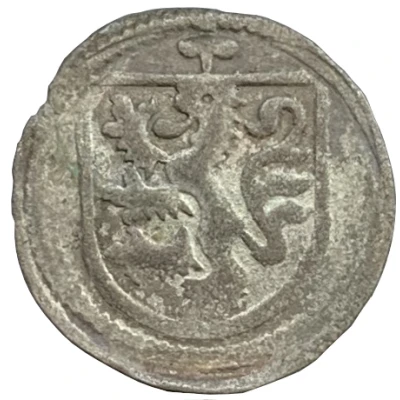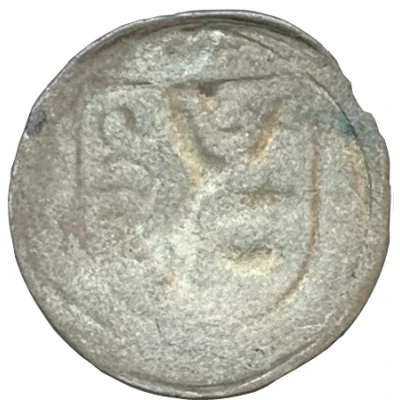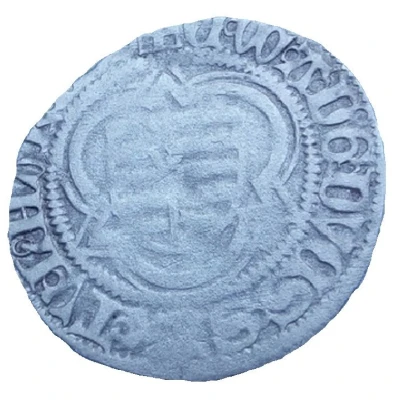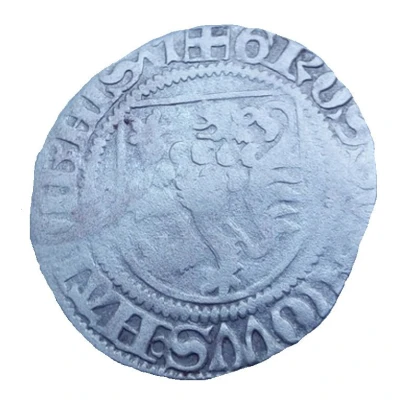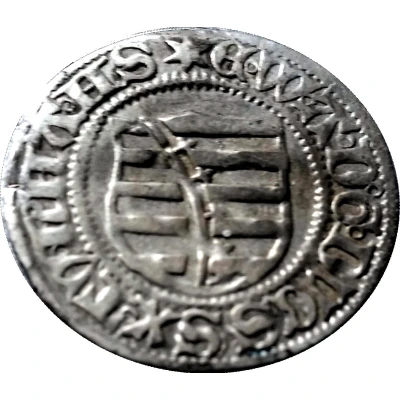
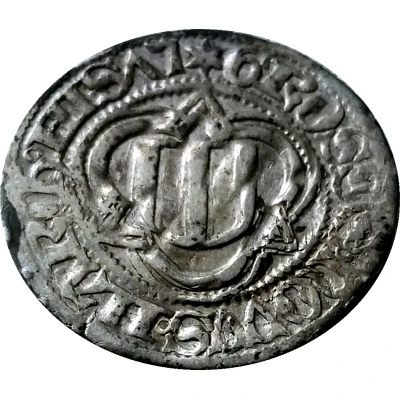

1 Spitzgroschen - Ernest, Albert and William III ND
1475 year| Silver | 1.66 g | 21.5 mm |
| Issuer | Electorate of Saxony (Albertinian Line) (German States) |
|---|---|
| Issuer | Electorate of Saxony (Albertinian Line) (German States) |
| Prince elector | Ernest (Ernst) (1464-1486) |
| Prince elector | Ernest (Ernst) (1464-1486) |
| Duke | Albert III (Albrecht III) (1464-1500) |
| Duke | Albert III (Albrecht III) (1464-1500) |
| Prince | William III (1445-1482) |
| Prince | William III (1445-1482) |
| Type | Standard circulation coin |
| Type | Standard circulation coin |
| Year | 1475 |
| Year | 1475 |
| Value | 1 Spitzgroschen = 1⁄16 Pfennige = ½ Groschen |
| Value | 1 Spitzgroschen = 1⁄16 Pfennige = ½ Groschen |
| Currency | Pfennig (1356-1492) |
| Currency | Pfennig (1356-1492) |
| Composition | Silver |
| Composition | Silver |
| Weight | 1.66 g |
| Weight | 1.66 g |
| Diameter | 21.5 mm |
| Diameter | 21.5 mm |
| Shape | Round (irregular) |
| Shape | Round (irregular) |
| Technique | Hammered |
| Technique | Hammered |
| Orientation | Coin alignment ↑↓ |
| Orientation | Coin alignment ↑↓ |
| Demonetized | Yes |
| Demonetized | Yes |
| Updated | 2024-10-05 |
| Numista | N#80029 |
|---|---|
| Rarity index | 94% |
Reverse
Arms in trilobate circle
Script: Latin (uncial)
Lettering: GROSSVS NOVVS MARTINIS L5
Lettering (regular font): GROSSVS NOVVS MARTINIS L5
Comment
Frey#162Ernst was founder of the Ernestine line of Saxon princes, and a direct patrilineal ancestor of Prince Albert of Saxe-Coburg and Gotha. He was the second son (but fourth in order of birth) of the eight children of Frederick II, Elector of Saxony and Margaret of Austria, sister of Frederick III, Holy Roman Emperor. The death of his older brother Frederick (1451) made him the new heir apparent to the position of Elector of Saxony.
In 1455 Ernst was kidnapped, along with his brother Albert, by the knight Kunz von Kaufungen an episode famous in German history as the "Prinzenraub" (i. e. The Stealing of the Princes). In 1464, he succeeded his father as Elector of Saxony, and annexed Thuringia in 1482, and three years later (Treaty of Leipzig, 1485) shared his territory with his brother Albert, until he arranged the division of the common possession. According to the Treaty of Leipzig he received an area around Wittenberg, the southern Thuringian part, the Vogtland and parts of the Pleissnerland. As a residence he selected Wittenberg. He provided for the welfare of the country and introduced the constitution.
One year after the division elector Ernest died in Colditz, at the age of 46 years, the consequence of a fall from a horse.
Interesting fact
One interesting fact about the 1 Spitzgroschen coin from the Electorate of Saxony (Albertinian Line) is that it features a unique combination of three portraits on its obverse side - Ernest, Albert, and William III. This triple portrait design was a rare feature in coins of that time period, and it signifies the joint rule of the three Electors of Saxony, who were brothers, over the Electorate.
